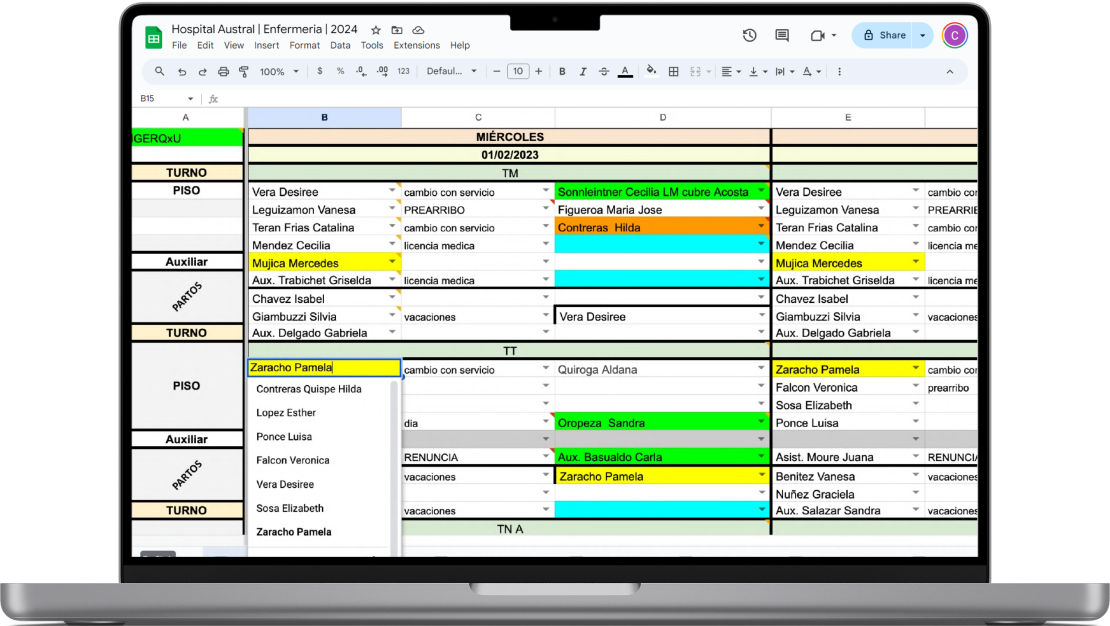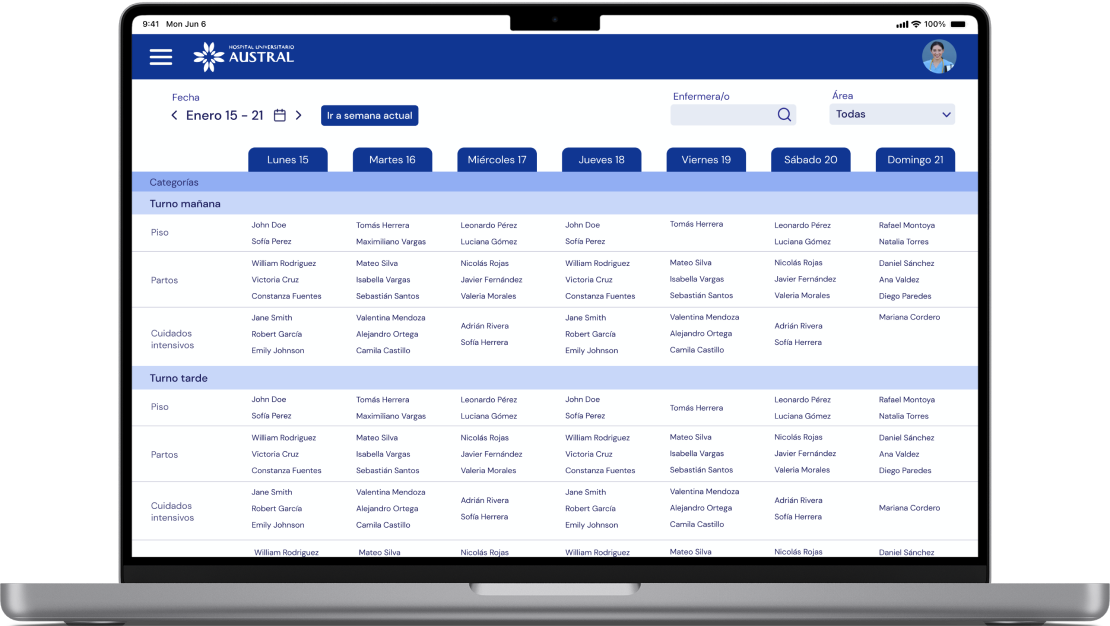Streamlining shift scheduling for better efficiency and patient care.
Organized Care
2024
Business Challenge
Market Context
The nursing department at Hospital Austral relied on cumbersome Excel spreadsheets for shift scheduling, leading to inefficiencies and communication challenges. The absence of a centralized system hindered coordination and workflow efficiency, impacting both staff satisfaction and patient care quality.
Objectives
Develop a user-friendly, centralized platform to streamline shift scheduling, improve communication, and enhance overall workflow efficiency within the nursing department.
User Pain Points
- Complex and time-consuming manual scheduling processes.
- Difficulty in managing shift changes and leave requests.
- Lack of accessible information regarding training sessions and substitute availability.
Cost of Problems
- Increased administrative workload due to manual processes.
- Potential for scheduling errors, leading to understaffing or overstaffing.
- Reduced staff morale and potential negative impact on patient care quality.
Strategic Approach
Research Insights
Conducted direct interviews and workflow observations with nursing staff to identify pain points and gather requirements. This user-centered research informed the design of a platform tailored to the specific needs of the department.
Solution Framework
- Centralized Scheduling System: Developed a platform featuring a user-friendly table format for shift scheduling, allowing easy access and updates.
- Substitute Recommender Feature: Implemented functionality to efficiently identify and recommend suitable substitutes for shifts.
- Training Session Management: Integrated a system for reserving and managing training sessions, simplifying access to hospital courses.
Decision Criteria
- Ensure the platform is intuitive and accessible to nurses of varying technical proficiency.
- Facilitate seamless communication and coordination among staff.
- Enhance operational efficiency and reduce manual administrative tasks.
Implementation Plan
- Phase 1: Conducted user research through interviews and observations to gather insights.
- Phase 2: Developed wireframes and prototypes, incorporating feedback from stakeholders.
- Phase 3: Performed usability testing with nursing staff to refine the platform.
- Phase 4: Launched the platform and provided training to ensure smooth adoption.
Visual Evolution
Before/After
Transitioned from manual Excel-based scheduling to a centralized, digital platform, resulting in streamlined processes and improved accessibility.


Key Iterations
- Initial designs focused on simplifying the scheduling interface.
- Incorporated user feedback to enhance usability and functionality.
- Final version included features like the substitute recommender and training session management.
Decision Points
- Prioritized user-friendly design to accommodate varying levels of technical proficiency.
- Ensured the platform addressed specific workflow challenges identified during research.
- Maintained alignment with organizational goals and stakeholder expectations.
Final Solution
Organized Care provided a comprehensive, user-centric platform that streamlined shift scheduling, improved communication, and enhanced operational efficiency, ultimately contributing to better patient care outcomes.

